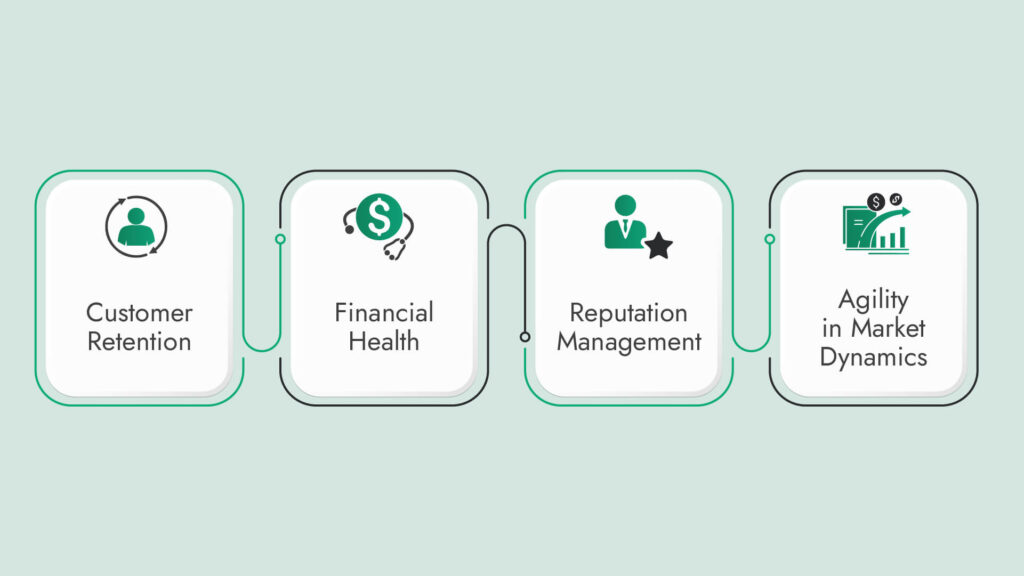Summary
- Demand forecasting uses data to predict future sales, optimize inventory and enhance customer service in distribution.
- Automated replenishment streamlines inventory management, reducing manual efforts and supporting just-in-time inventory models.
- Optimal service levels ensure consistent customer satisfaction, boost reputation, and maintain financial health in the competitive market.
In the world of distribution, ensuring that products are available at the right time, in the right quantity, and from the right location is the key to success. At the heart of this lies two pivotal processes: demand forecasting and product replenishment. Understanding these processes and employing advanced tools like automated systems can make all the difference for small to midsize distribution businesses looking to excel in today’s competitive market. This article will dive deep into demand forecasting, automated replenishment, and their significance in achieving optimal service levels.
What is Demand Forecasting?

Demand forecasting is the art and science of predicting future sales or the demand for a particular product. It produces detailed and accurate forecasts using historical data, market trends, seasonality, and economic indicators. These predictions are then used to make informed decisions about purchasing, production, staffing, and more.
For distributors, accurate demand forecasting is critical. Here’s why:
- Inventory Optimization: By predicting demand, distributors can maintain optimal inventory levels—neither too much nor too little. This translates to reduced carrying costs and minimized stockouts.
- Strategic Planning: Understanding future demand enables businesses to make informed decisions about capacity planning, capital investments, and expanding into new markets.
- Enhanced Customer Service: When you have what your customers need, when they need it, you are not just meeting their expectations but exceeding them. Accurate demand forecasting ensures customer satisfaction and fosters loyalty.
The Magic of Automated Replenishment

While demand forecasting provides an idea of what might be needed in the future, product replenishment ensures that these products are available when needed. Automated replenishment systems use technology to monitor inventory levels in real time, triggering reorders at predefined thresholds. Here’s how automated replenishment proves beneficial:
- Reduced Manual Efforts: Gone are the days when staff had to check inventory levels manually and place reorders. Automated systems do this seamlessly, eliminating human errors and saving valuable time.
- Just-In-Time Inventory: Automated replenishment aids in achieving a just-in-time inventory model. This means that products are ordered and stocked just when needed, thereby minimizing storage costs and reducing the risks associated with overstock or obsolescence.
- Enhanced Vendor Relations: With consistent and timely reorders, businesses can foster better relationships with suppliers, often availing benefits like bulk discounts or faster deliveries.
Service Levels: The Competitive Edge

In the distribution domain, service levels determine how successfully a business can meet customer demand without facing a stockout. Ideally, a company aims for a high service level that consistently meets demand. Here’s why achieving optimal service levels is paramount:
- Customer Retention: A high service level ensures customers get what they need when needed, enhancing satisfaction and fostering loyalty.
- Financial Health: By avoiding stockouts, businesses can ensure steady revenue streams and maintain profitability. Conversely, excess inventory due to poor replenishment practices can tie up funds and lead to additional storage costs.
- Reputation Management: Consistently meeting demand enhances a company’s reputation in the market, making it the preferred choice among consumers.
- Agility in Market Dynamics: Optimal service levels ensure that businesses can respond swiftly to changes in the market, be it a sudden surge in demand or an unforeseen external event.
In Conclusion
The world of distribution is intricate, where the timely availability of products can make or break a business. Demand forecasting and product replenishment, when done right, can be game-changers. By leveraging advanced tools like automated replenishment systems, small to midsize distribution, businesses can optimize their operations and carve a niche in this competitive market.
For those who want to understand how modern ERP systems can aid in streamlining demand forecasting and product replenishment, 10X ERP is at your service. With a legacy of excellence and a passion for innovation, we are here to guide your business toward unparalleled success.
Learn more about 10X ERP at www.10xerp.com or contact our expert team for personalized insights.
